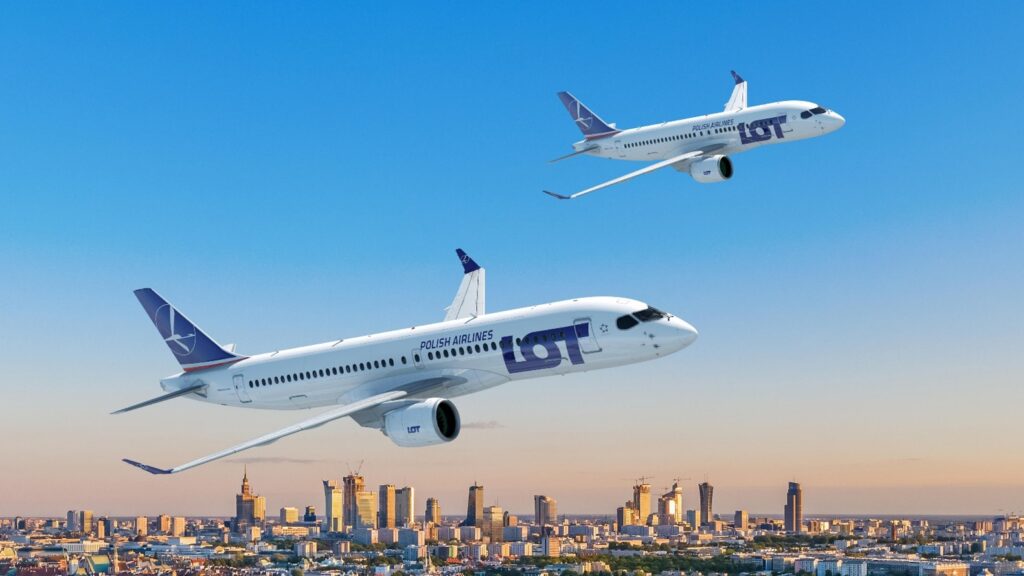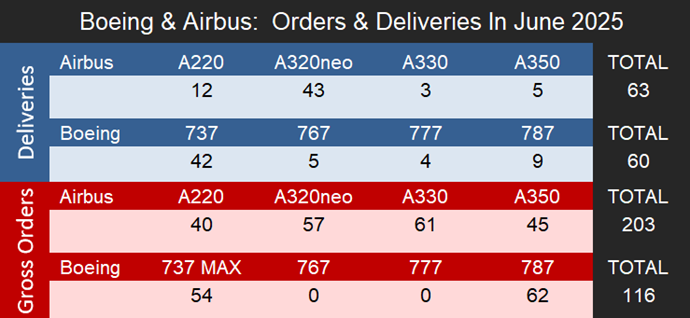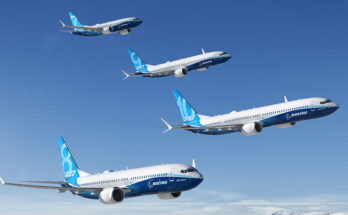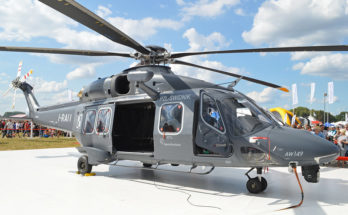Deliveries Rise for Both Boeing and Airbus in a Strong June /// Airbus Secures First A220 Order of the Year from LOT at the Paris Air Show



June 2025 Summary
Both manufacturers, Boeing and Airbus, delivered more aircraft in June than in the previous month. Boeing handed over 60 aircraft in June, exceeding the 45 it delivered in May, while Airbus delivered 63 aircraft, up from 51 in May. As we near the middle of the year questions are being raised about whether Boeing and Airbus will be able to meet their 2025 delivery targets. Airbus is particularly in the spotlight after entering 2025 with ambitious plans to ramp up deliveries to 820 aircraft from the 766 delivered in 2024, but ongoing supply chain constraints are still preventing this; the manufacturer needs to deliver an average of 86 aircraft per month, or a total of 514 aircraft for the remainder of the year to meet this goal which will be exceedingly difficult as the year progresses. As of June 30th, Airbus has delivered only 306 commercial aircraft in 2025, or an average of 51 aircraft per month. Boeing on the other hand has not cited a specific target for the year, but has delivered 280 aircraft as of June 30th.


• A320neo numbers include all variants for the family; A319neo, A320neo and A321neo.
• Production rate targets do not represent the actual number of aircraft produced in May 2025. Instead, they are generalized figures based on current monthly production estimates derived from OEM guidance and internal research conducted by Forecast International.
Deliveries
The 60 Boeing jets delivered in the month of June included 42 737 MAXs, five 767s, four 777s, and nine 787s. Boeing’s monthly deliveries had previously remained steady in the 40 to 45 aircraft range, making the 60 aircraft delivered this month a positive sign of increasing delivery momentum. Positive signs are also emerging for the 737 MAX as Boeing finally reached its FAA-approved production rate of 38 737 MAX aircraft in May and produced 35 737 MAXs in the month of June. 737 MAX deliveries will periodically exceed the FAA approved production rate of 38 aircraft per month, given that Boeing is still drawing from a substantial inventory of already produced jets, as evidenced by the 42 737 MAXs delivered in June.

As for its remaining programs, Boeing delivered 37 787s from January 1 through June 30 and a total of nine 787s in the month of June. The manufacturer continues to aim for a production rate of seven per month by the end of the year and ten per month by 2026. While the 787 backlog of 1,001 aircraft supports these targets, Forecast International believes that the uncertainty caused by tariffs and ongoing supply chain issues is likely to delay progress toward ramping up 787 production, and that this timeline is likely to be delayed.
The 767 program currently includes both KC-46 tankers and 767-300F freighters. Boeing is delivering the final 767-300Fs to FedEx and UPS ahead of the program’s scheduled conclusion in 2027, with 28 unfilled orders remaining as of June 30, 2025.
Meanwhile, Boeing has delivered a total of 20 777s through June 30, or an average of around three aircraft per month, in line with the manufacturer’s production target rate of three 777s per month. Additionally, the first 777X delivery is still scheduled for 2026 to Lufthansa. However, the aircraft is still awaiting certification, which Boeing expects to receive this year, although Forecast International expects a possible delay into 2026. Boeing has also postponed the entry into service of the 777-8 freighter from 2027 to 2028.

In June, Airbus delivered 63 aircraft, including 12 A220s, 43 from the A320neo family, three A330s and five A350s. Although A320neo family production and deliveries have remained below Airbus’ target of 50 per month in each month this year, Airbus has reaffirmed its target of increasing production to 75 aircraft per month by 2027. Airbus has recently added an additional A320neo family final assembly line at its Mobile, Alabama plant, which is expected to become operational sometime in the third quarter of this year. This is a positive step toward Airbus reaching its long term production goals, though success will also depend on the recovery and capacity of the broader commercial aerospace supply chain.

As for the A220 program, Airbus delivered 12 A220s in June, despite only producing six that month. The company has stated a goal of reaching a production rate of 14 per month by 2026. Forecast International views the 12 deliveries as progress toward ramping up A220 output, though we also see them as carryover from May, when only five A220s were delivered. We continue to monitor A220 production and believe it is possible that output could reach approximately ten aircraft per month by the end of 2026. However, we consider it highly unlikely that a sustained production rate of 14 aircraft per month will be achieved by the beggining of 2026.
On the widebody side, five A350s were delivered in June, though Airbus produced seven during the same month. As of June 30, Airbus has delivered only 21 A350s in 2025, an average of three and a half aircraft per month, which is well below the manufacturer’s current targeted production rate of six per month. Airbus began the year with plans to increase A350 production to ten aircraft per month by the end of the year, but later revised this target to a maximum of six due to supply chain bottlenecks. Meanwhile, A330neo deliveries remain steady at approximately three to four aircraft per month, while no near term increases in the production rate are planned.

Orders
In June, Boeing logged 116 gross orders including 54 for the 737 MAX and 62 for the 787. All these orders were received outside of the Paris Air Show, which Boeing had a quiet appearance at due to the ongoing investigation into the Air India 787 crash. Additionally, these new orders only add to the company’s growing backlog that it has been struggling to deliver. At its projected 2025 production rate, Boeing’s current backlog now equates to approximately 11.6 years of output, a clear indication the manufacturer is struggling to deliver aircraft at a pace that meets demand.
- For consistency, this article does not include Boeing’s ASC 606 accounting adjustments and considers net orders as gross orders minus cancellations.

Airbus recorded strong orders in June during the Paris Air Show, receiving a total of 203 firm orders, just below our initial expectation of 225. While Airbus remains in a stronger position than Boeing in terms of production and deliveries, it continues to struggle to meet its delivery targets and is producing aircraft at a pace that falls short of market demand. In this environment, orders are merely indicative of demand for new aircraft, and what truly matters is whether manufacturers like Boeing and Airbus can fulfill these commitments.


Backlog

• Boeing backlog numbers do not include 737-700, 737-800 or 777-300ER ghost orders.
• A320neo numbers include all variants for the family; A319neo, A320neo and A321neo
As of June 30, 2025, Airbus reported a backlog of 8,742 jets, excluding the A320ceo family and A330-200, with 7,660 or 88.0 percent of this backlog consisting of A220 and A320neo family narrowbodies. Meanwhile, Boeing’s total unfilled orders before ASC 606 adjustments stood at 6,581 aircraft, excluding the 737-700, 737-800, and 777-300ER, with 4,869 or 74.0 percent being 737 MAXs. Airbus’s backlog represents 10.7 years of production based on Forecast International’s 2025 production estimates, while Boeing’s backlog would last approximately 11.6 years. While these figures reflect a strong order book for both manufacturers, they also point to the inability of Boeing and Airbus to meet market demand and produce aircraft at a sufficient pace. A healthier backlog would reflect closer to between five and eight years of production. These figures also highlight the broader condition of the commercial aviation supply chain. With ongoing uncertainty around tariffs and persistent supply chain constraints, the timeline for both manufacturers to scale up production remains unclear.


With diverse experience in the commercial aviation industry, Grant joins Forecast International as the Lead Analyst for Commercial Aerospace. He began his career at the Boeing Company, where he worked as a geospatial analyst, designing and building aeronautical navigation charts for Department of Defense flight operations.
Grant then joined a boutique global aviation consulting firm that focused on the aviation finance and leasing industry. In this role he conducted valuations and market analysis of commercial aircraft and engines for banks, private equity firms, lessors and airlines for the purposes of trading, collateralizing and securitizing commercial aviation assets.
Grant has a deep passion for the aviation industry and is also a pilot. He holds his Commercial Pilots License and Instrument Rating in addition to being a FAA Certified Flight Instructor.




